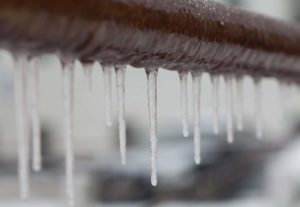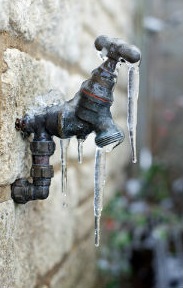Common Winter Drainage Problems
Winter is a hard time for your home’s drainage systems. Ice, snow, and deep freezes bring all kinds of unique drainage problems that are more difficult to solve than in the warmer months. You should make sure that you’re prepared to deal with the following five challenges!
Bursting Pipes
 Frozen pipes bursting in the cold weather is a fairly common, yet incredibly expensive, problem. If your pipes aren’t properly insulated and the ones to the outdoors aren’t properly shut off, they can burst, flooding your basement from the inside. You don’t want to deal with that in -30-degree weather!
Frozen pipes bursting in the cold weather is a fairly common, yet incredibly expensive, problem. If your pipes aren’t properly insulated and the ones to the outdoors aren’t properly shut off, they can burst, flooding your basement from the inside. You don’t want to deal with that in -30-degree weather!
Luckily, preventing burst pipes is also pretty easy. Turn off the water to the outside spigots (usually around where your hot water heater is located; try and follow the pipes), drain the remaining water out, and close them up. You can even fit your outdoor faucets with year-round, frost-free models that use a special sillcock and vacuum-breaker that prevent the cold from affecting your indoor pipes.
Jammed Eavestroughs and Blocked Drains
Proper drainage means keeping the flow of water going away from your home’s foundation. It’s necessary to keep the eavestroughs and downspouts in great condition so that the meltwater is directed away from your basement. Without proper maintenance, the water can easily soak into the soil and leak in through cracks in the foundation.
To prevent this, make sure that every part of the eaves and downspouts are solid and firmly attached to your home. High winds and cold can impact their structural integrity, so get Keep them clear of leaves and branches, test them to see if they flow properly, and lengthen the downspout away from your home if you think the water isn’t flowing out far enough.
Sump Pump Burnouts
A lot of things conspire against this unsung hero of the basement. The sump pump works to remove excess water from your basement and foundation, but it can fail at the  worst moments: during an electrical outage, the drainage pipe is frozen, or it’s working so hard that it burns itself out. You’ll want to have it looked at, or replaced if it’s an older model, before the transition to the wetter months of winter.
worst moments: during an electrical outage, the drainage pipe is frozen, or it’s working so hard that it burns itself out. You’ll want to have it looked at, or replaced if it’s an older model, before the transition to the wetter months of winter.
Pressure on the Walls
Heating your basement in winter is, naturally, a good thing for you and your family, but it can have some unexpected effects on the soil surrounding the home. As the walls warm up, they can thaw out the frozen soil, causing moisture to accumulate around the foundation. This moisture, caught between the cold and the warmth, can exert a lot of pressure on the walls, and the water can come through existing cracks or create new ones.
To prevent this, create alternate routes for the water. Weeping tiles along the base of the foundation are a great start; a barrier of crushed round stone abutting the foundation is even better. This way, all moisture that could potentially leach through the soil and stick around simply descends through the stone and is drained away with the weeping tile system. It’s a great defence!
Freezes and Thaws
 You can’t predict winter anymore; week-to-week freezing and thawing can make a mess of soil around your foundation and the ice in your eaves. It’s a winter problem that you have to be prepared for because a problem caused by unseasonably balmy weather could be exacerbated when the temperatures plunge again and the moisture expands.
You can’t predict winter anymore; week-to-week freezing and thawing can make a mess of soil around your foundation and the ice in your eaves. It’s a winter problem that you have to be prepared for because a problem caused by unseasonably balmy weather could be exacerbated when the temperatures plunge again and the moisture expands.
A freezing and thawing cycle is different from the hydrostatic pressure on the foundation created by your warm basement, but the solutions are the same: create an exit point for the moisture. Weeping tiles, crushed round stone, and solidly built foundation walls are all key to keeping out the moisture. You may not be able to predict the winter weather, but you can still be prepared for it!
